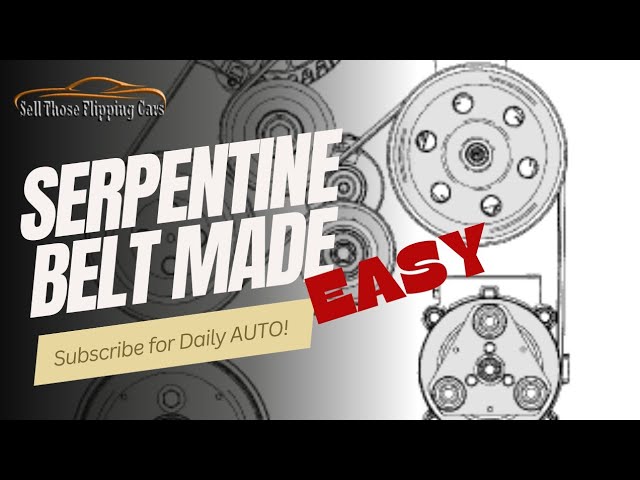Replacing the serpentine belt on a 2001 Ford Taurus is a straightforward DIY task that can save labor costs. Ensure the engine is off and cool before starting. Consult your vehicle manual for exact specifications, as belt routing varies slightly between the 3.0L OHV Vulcan and 3.0L Duratec engines.
Tools and Materials Required
- New serpentine belt (Gates K060755 for most models)
- Serpentine belt routing diagram (located under the hood)
- Wrench or socket set (15mm for tensioner pulley)
- Safety gloves and eye protection
- Belt tensioner tool (optional)
Serpentine Belt Routing Diagram Description
For the standard 2001 Taurus routing (assuming 3.0L OHV engine):
- Crankshaft pulley → A/C compressor → Alternator → Idler pulley → Water pump → Power steering pump → Tensioner pulley → Back to crankshaft.
Check your vehicle’s diagram decal for variations. Mark the routing with chalk if needed to avoid mistakes.

Step-by-Step Installation Process
- Release belt tension: Use a wrench on the belt tensioner pulley bolt to rotate it counterclockwise, freeing slack.
- Remove the old belt: Slide it off all pulleys, noting the exact path for reference.
- Clean pulleys: Inspect pulleys for wear or debris; wipe if necessary.
- Install new belt: Align the new belt on pulleys following the routing diagram, ensuring it seats properly in each groove.
- Set tension: Rotate the tensioner to apply tension, then release slowly to engage the belt.
- Verify installation: Manually rotate the engine (via crankshaft bolt) to check for slips or misalignments.
Common Troubleshooting
- Squealing noise: Indicates insufficient tension; re-tension the belt per manual specs.
- Belt slippage: Check pulley alignment and belt condition; replace if worn.
Money-Saving Tips
DIY replacement costs under $50 for parts versus $150+ at a shop. Buy belts online for bulk savings and inspect belts annually to prevent unexpected failures. Always double-check routing to avoid costly reworks.

